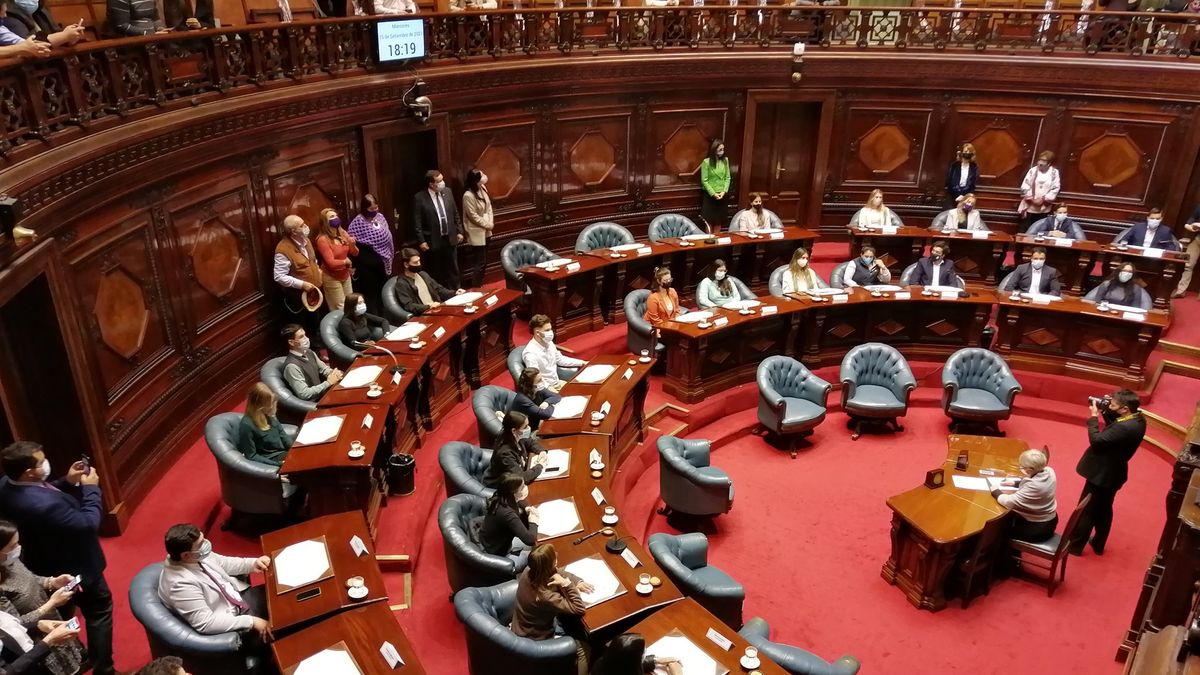The “regulated” CCL dollar drops 1% to $ 206.79, therefore, the gap with the official is 105.9%. While the “free” CCL dollar (operated with bonds under foreign law, ADRs, Cedears or bilateral negotiations), remains between $ 213.77 and $ 214.22.
Sabrina Corujo, director of PPI, stressed that “the market is still waiting for a devaluation. It is not clear – and hence the volatility – if it will be via a discrete jump, or an acceleration of the crawling peg. But what is certain is that inflation running at levels of 3%, 3.5% or 4%, is not consistent with a sustained monthly devaluation rate of 1% -1.5%. In this, we believe that there is a coincidence “.
For the analyst, “the gap should narrow – an economy is known (another coincidence) does not work that way in the long term – and this could occur from a combination of a rise in the floor and a fall in the ceiling. From the ceiling, a scenario of lower Uncertainty, with a greater projection of future policies and agreement with the IMF, will allow it to be lowered or at least stabilized.We can say that this ceiling is the one that marks the CCL levels today of $ 215 / $ 216. From the side of the floor, what we are talking about. .. for example, an acceleration of the devaluation rate that the BCRA manages “.
blue dollar
The blue dollar back this Thursday after scoring two consecutive hikes, according to a survey of Ambit in the Black Market of Foreign Currency.
The parallel dollar falls $ 1 to $200,50, so that the gap exceeds 100%. In the last two wheels, it had increased by $ 2, after the implementation of new regulations in the operation of financial dollars, and after falling on Monday, a day after the legislative elections.
A resolution of the National Securities Commission (CNV) established on Monday that the limit of operations in the stock exchange “counted with settlement” (CCL) must respect a technical limit (50,000 nominal dollars) beyond purchases of public securities in currency foreign that each investor has made.
On Friday, the parallel dollar had lost $ 6.50 to $ 200, after hitting its highest face value of $ 207 on Thursday.
With that sharp decline, the blue dollar accumulated a rally of just $ 1 last week. Recall that in the last four weeks, it had registered increases of $ 1.50, $ 2.50, $ 8.50, and $ 2.
Likewise, throughout October the informal dollar rose $ 11.50 (+ 6.2%) due to high inflation, exchange controls, fiscal deficit and strong country risk, which fueled devaluation expectations and put pressure on the currency, which it tends to make sudden jumps with just a few operations.
Anyway, so far in 2021 the parallel accumulates an appreciation of $ 35.50 (close to 20%), well below the accumulated inflation of 2021, higher than 41%.
Let us remember that during September, the informal dollar rose $ 4.50 (+ 2.5%), after posting its lowest rise since March in August, climbing just $ 1 (+ 0.6%). After hitting a low of $ 139 in early April, the parallel dollar increased $ 9 in April (6.4%), $ 7 (4.7%) in May, $ 11 (7%) in June, and $ 12.50 (+ 7.4%) in July.
Official dollar
The The Central Bank assisted the market demand for foreign exchange with US $ 70 million when the volume remains well above the usual trading averages. In this way, it cuts a mini streak of two wheels without a seller balance.
“During the day, a strong presence of imports is still observed in a context of postponement of liquidations of cereal exports (they are entering about US $ 65 million per day vs. the usual US $ 130 million)”, highlighted market sources.
The red of the month reaches US $ 700 million and, given the current restrictions, It has room to end the month with a slight recovery that allows it to show a result that is not as bulky as that of last September (-u $ 950 million).
Simultaneously, the wholesale currency advanced six cents to $ 100.43, under the strict regulation of the BCRA.
The The dollar today rises one cent this Thursday to $ 105.95 -without taxes-, according to the average of the main banks in the financial system. In turn, the retail value of the US dollar at Banco Nación remains at $ 105.50.
For its part, the savings dollar or solidarity dollar – which includes 30% of the COUNTRY tax, and 35% on account of the Income Tax – rises two cents to $ 174.82.
Source From: Ambito
David William is a talented author who has made a name for himself in the world of writing. He is a professional author who writes on a wide range of topics, from general interest to opinion news. David is currently working as a writer at 24 hours worlds where he brings his unique perspective and in-depth research to his articles, making them both informative and engaging.




